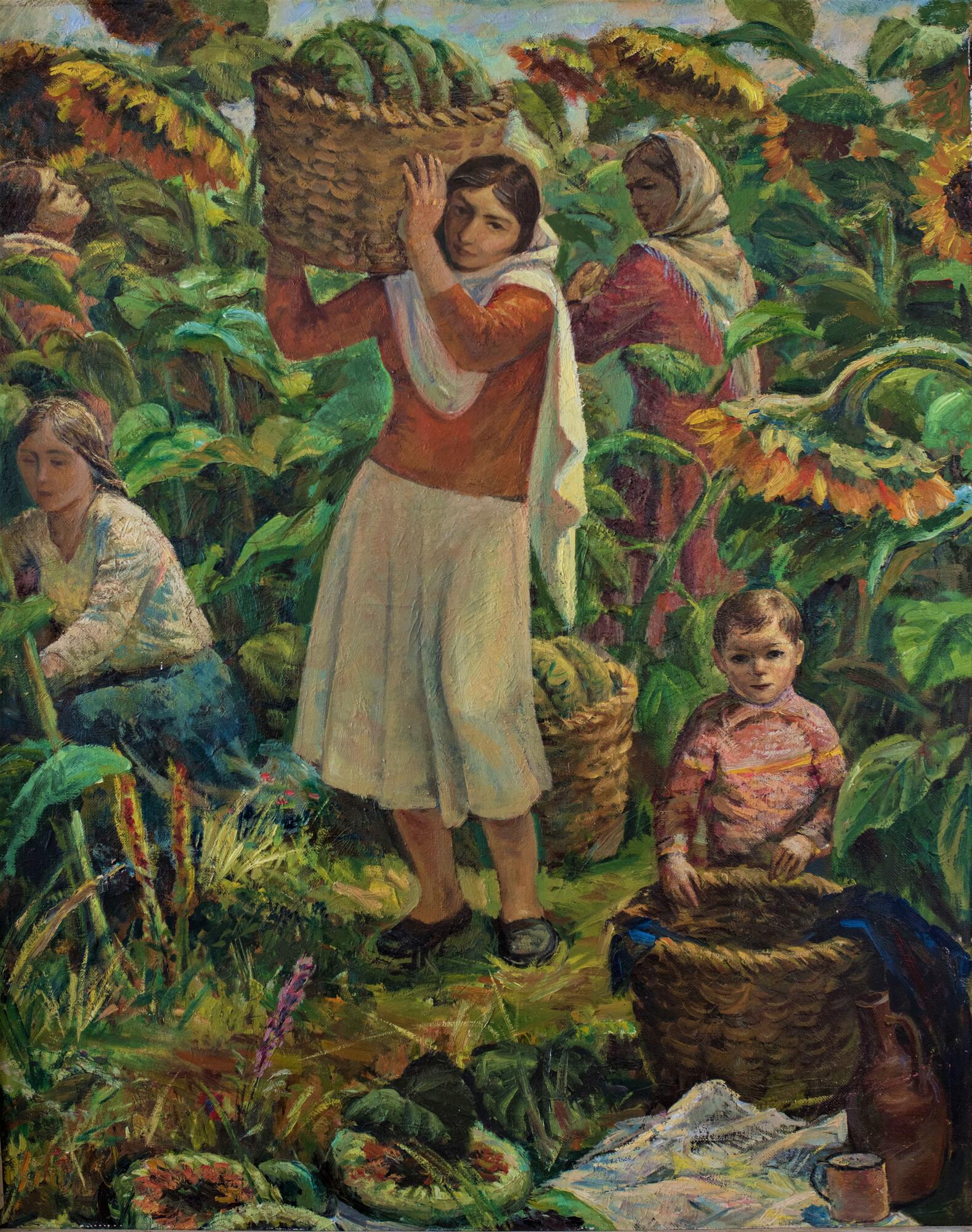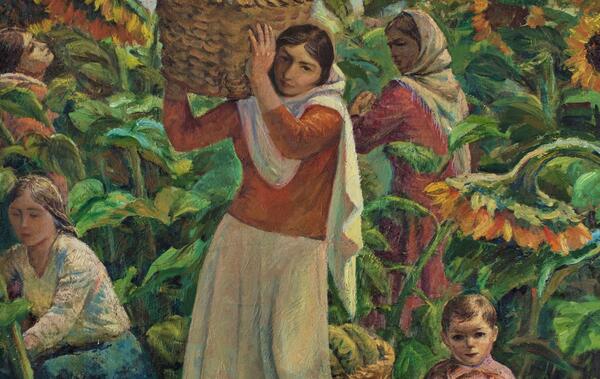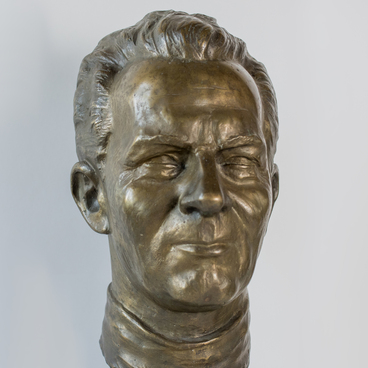Mejmuddin Agaverdiyev created the painting “Sunflower Harvest” from the collection of the Volzhsk Art Gallery in 1980. It is a genre scene against the background of a field where sunflowers are grown.
In the center of the composition, the artist depicted a young woman with a large wicker basket full of large cut sunflowers. To her left and right, three other girls harvesting the crops can be seen in the tall bushes. In the foreground, a small boy holds on to an empty basket, with a jug of water and a mug standing nearby.
This picture belongs to socialist realism. That was the name of the artistic style that dominated the art of the USSR. Socialist realism was approved at the Party Congress in 1932 as a tool to strengthen the authority of the party and to promote the ideas of the state. Typical subjects of this trend were factory workers, May Day marches, joyful young pioneers, people on subbotniks, and the leaders holding meetings with citizens. A special place in socialist realism was occupied by scenes depicting merry collective farmers.
The autumn harvest festival was celebrated since the pagan Rus. In Soviet times, the ancient tradition was not eradicated, instead, the authorities decided to use this day as an element of propaganda. In art, this subject matter became popular after Joseph Stalin’s famous phrase “Life has become better, life has become happier!”, uttered at the First All-Union Conference of Stakhanovites in 1935.
The country’s government used fine arts to boast the abundance and well-fed life of collective farmers. Paintings by Soviet artists depicting joyfully working peasants who became part of new enterprises — collective farms, or kolkhozes — were sent to international exhibitions. The subjects for those paintings became several of the most successful exemplary collective farms.
Artists addressed the theme of the harvest festival throughout the Soviet period, but the most optimistic and pompous works belong to the pre-war years. In the second half of the 20th century, the image of harvest became less agitational and more tranquil. Emphasis shifted from depicting the record achievements of Soviet collective farmers to the people themselves, their appearance, details of everyday life. Artists began to pay more attention to the important, but also hard work that the characters of their paintings were engaged in. Mejmuddin Agaverdiyev with his “Sunflower Harvest” is no exception.
In the center of the composition, the artist depicted a young woman with a large wicker basket full of large cut sunflowers. To her left and right, three other girls harvesting the crops can be seen in the tall bushes. In the foreground, a small boy holds on to an empty basket, with a jug of water and a mug standing nearby.
This picture belongs to socialist realism. That was the name of the artistic style that dominated the art of the USSR. Socialist realism was approved at the Party Congress in 1932 as a tool to strengthen the authority of the party and to promote the ideas of the state. Typical subjects of this trend were factory workers, May Day marches, joyful young pioneers, people on subbotniks, and the leaders holding meetings with citizens. A special place in socialist realism was occupied by scenes depicting merry collective farmers.
The autumn harvest festival was celebrated since the pagan Rus. In Soviet times, the ancient tradition was not eradicated, instead, the authorities decided to use this day as an element of propaganda. In art, this subject matter became popular after Joseph Stalin’s famous phrase “Life has become better, life has become happier!”, uttered at the First All-Union Conference of Stakhanovites in 1935.
The country’s government used fine arts to boast the abundance and well-fed life of collective farmers. Paintings by Soviet artists depicting joyfully working peasants who became part of new enterprises — collective farms, or kolkhozes — were sent to international exhibitions. The subjects for those paintings became several of the most successful exemplary collective farms.
Artists addressed the theme of the harvest festival throughout the Soviet period, but the most optimistic and pompous works belong to the pre-war years. In the second half of the 20th century, the image of harvest became less agitational and more tranquil. Emphasis shifted from depicting the record achievements of Soviet collective farmers to the people themselves, their appearance, details of everyday life. Artists began to pay more attention to the important, but also hard work that the characters of their paintings were engaged in. Mejmuddin Agaverdiyev with his “Sunflower Harvest” is no exception.



